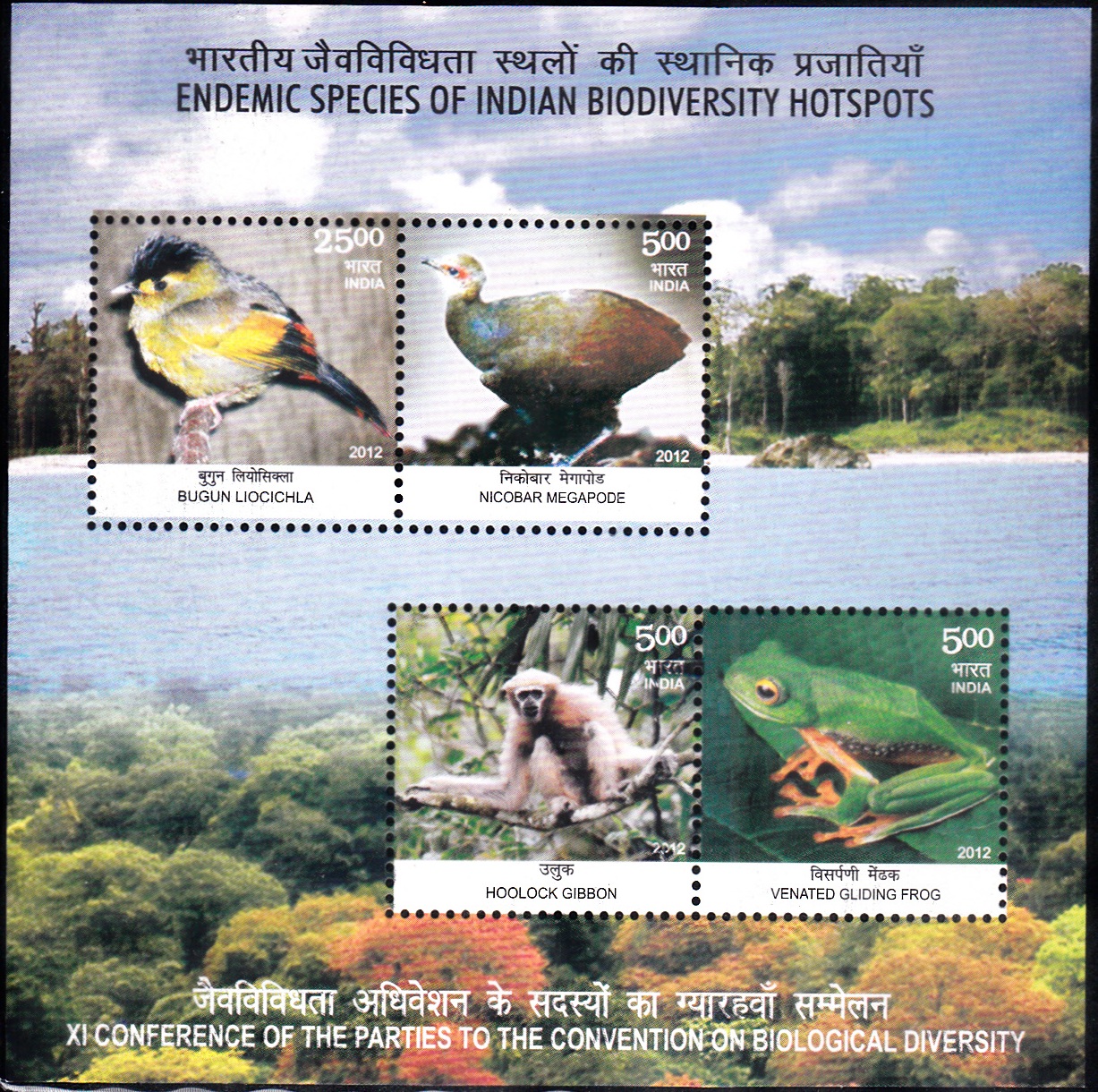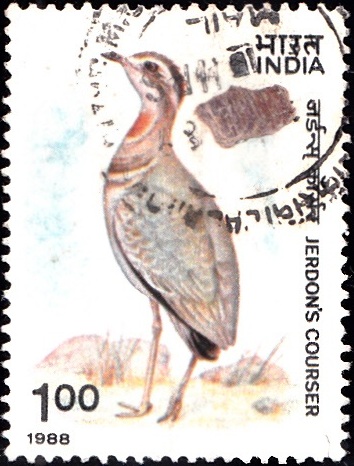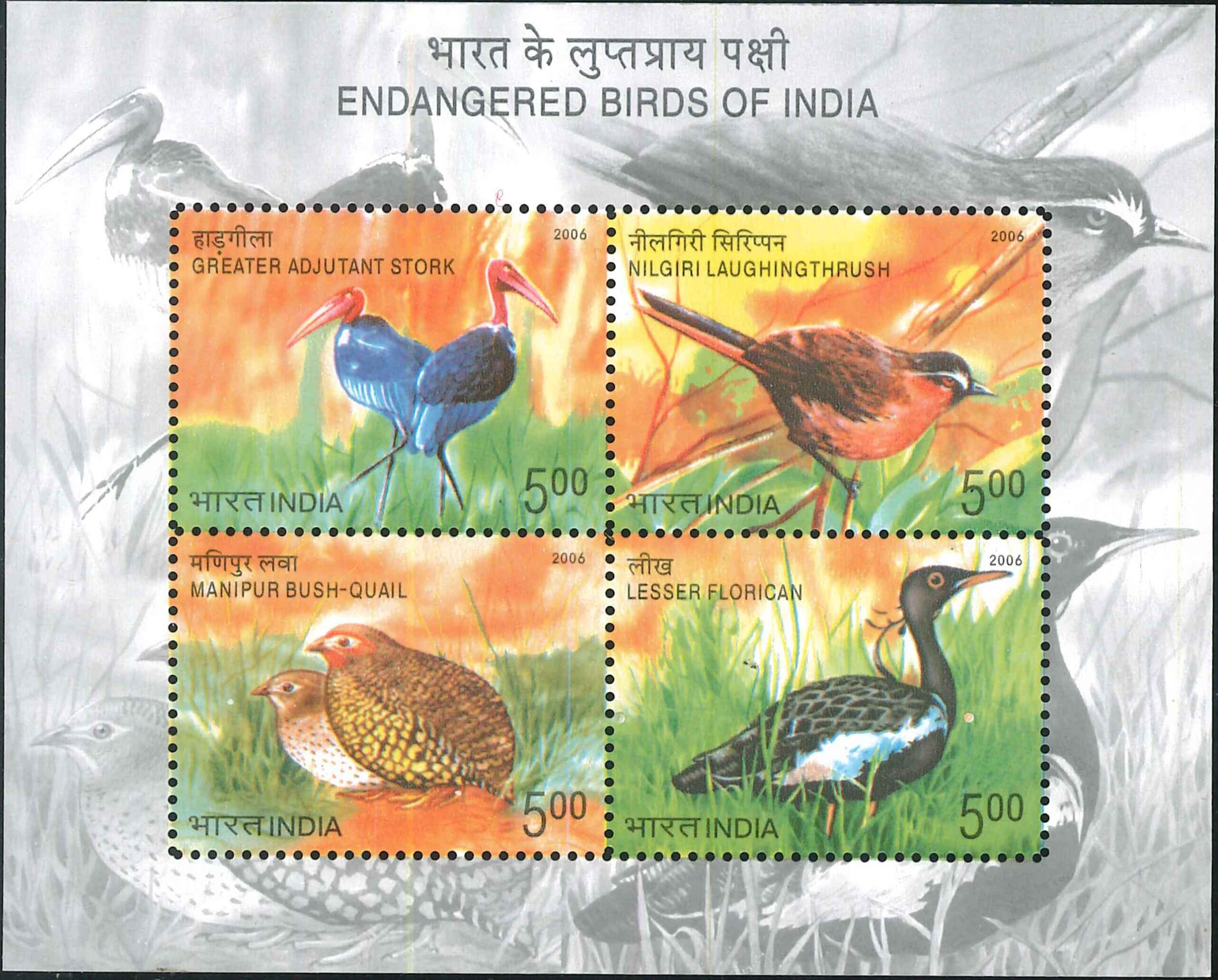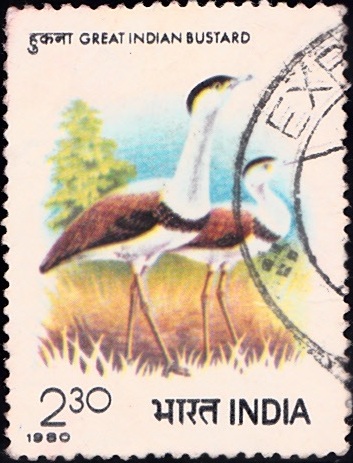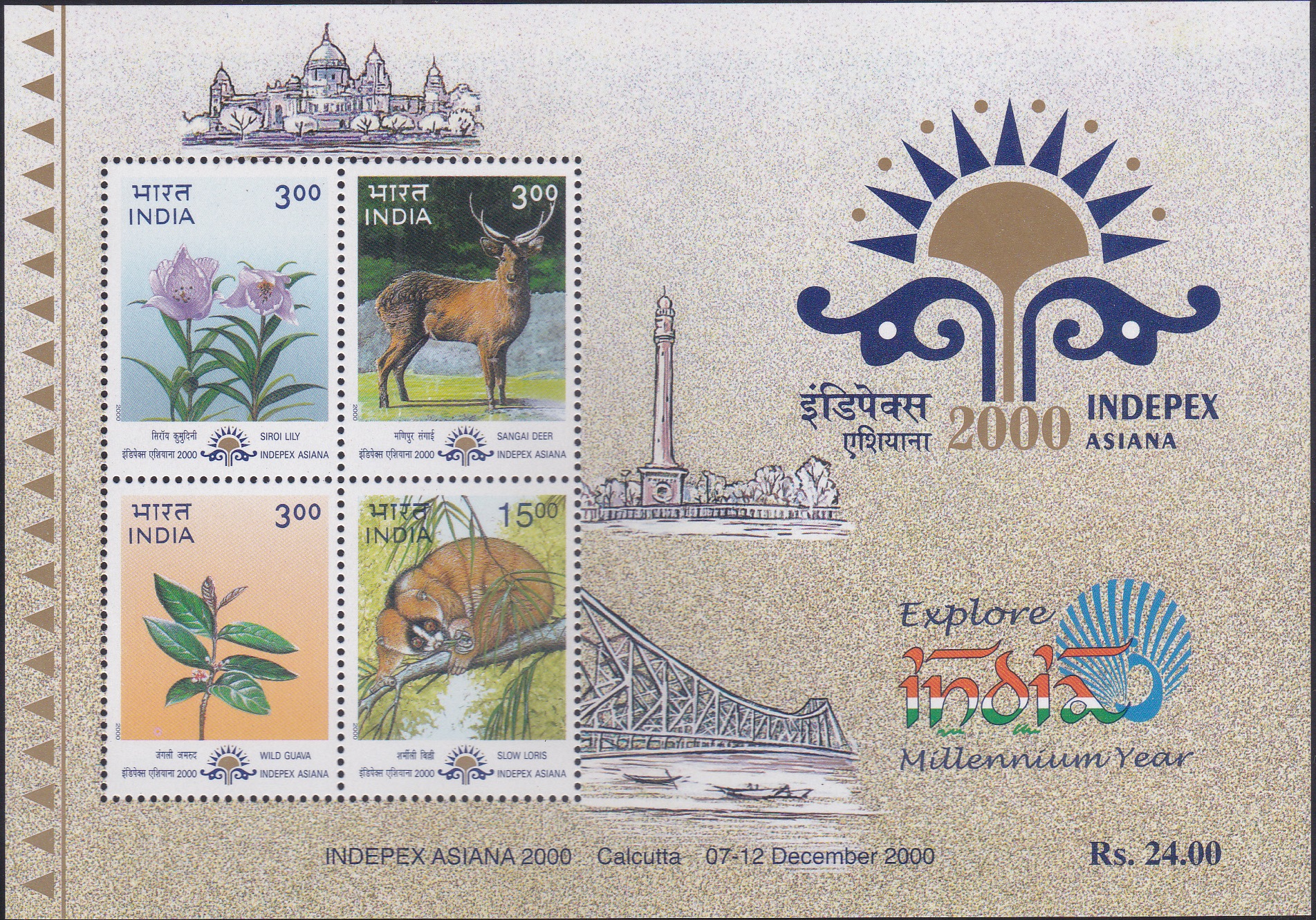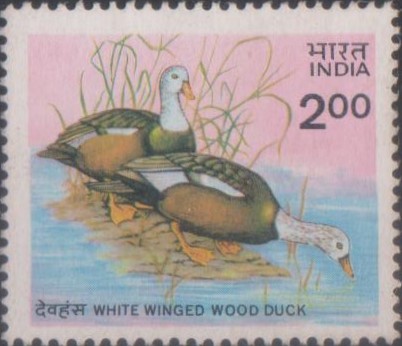
White Winged Wood Duck
A commemorative postage stamp on the Wildlife Conservation : White-winged duck (Asarcornis scutulata) :
 Issued by India
Issued by India
Issued on May 18, 1985
Issued for : Department of Posts is proud to issue a special postage stamp on this endangered species..
Description of Designs : The 200 P denomination stamp depicting the White Winged Wood Duck has been designed by India Security Press, Nashik based on the material supplied by World Wild Life Fund, India. The cancellation has been designed by Alka Sharma.
Type : Stamp, Mint condition
Colour : Multicolour
Denomination : 200 Paise
Overall size : 3.34 x 2.88 cms.
Printing size : 2.987 x 2.524 cms.
Perforation : 13 x 13
Paper : Unwatermarked adhesive coated paper
Number printed : 15,00,000
Number per issue sheet : 42
Printing process : Photogravure
Printed at : India Security Press
About :
- The White Winged Wood Duck is a large duck, with a black body, a white head thickly spotted with black, conspicuous white patches on the wings and red or orange eyes. Its average length is about 81 cms. The sexes are more or less alike, the male having more gloss on the plumage, and being much larger and heavier. Its voice is distinctive and ghostly, and accounts for the Assamese name ‘Deo Hans‘ or Spirit Duck. In Burma, it is called ‘Mandali‘, and in Indonesia ‘Itik Hutan‘, or Forest Duck.
- The White Winged Wood Duck is essentially a resident of the dense tropical evergreen forest. It prefers to live in inaccessible swampy areas formed by numerous rivers, streams, creeks etc. This duck is generally found in pairs or in small parties of four to six, though parties of more than 10 are also recorded. It is a shade loving bird keeping most of the day in secluded jungle pools, occasionally perching on the trees during the day.
- It moves for its feeding ground in open waters after dusk and remains active throughout the night till early morning. The adults are largely omnivorous. The food consists of both plant and animal material, acquatic plants, seed of wild and cultivated plants, acquatic insects, crustaceans, molluscs, frogs, snakes and fishes. The ducklings seem to start feeding entirely on small animals, progressively expanding their diet to include insects, worms, small snails and fish. The usual call of the male is a trumpet like cronk while the call of the female in flight is a whistle. It breeds in the hollows of trees, during summer months.
- As far as its distribution in India is concerned it is known from Goalpara, Kamrup, Darrang, Nowgang, Sibsagar Lakhimpur, Tezpur and Karbi–Anglons districts of Assam and also the Lohit district of Arunachal Pradesh. Elsewhere, it is also recorded from Burma, Malaya and Indonesia.
- In the beginning of the 20th Century this species was reported to be very common in the above mentioned districts of Assam. However, during the later half of the century the population of this duck has gone down alarmingly. In 1952, the bird was declared to be one of the most threatened species of the ducks of North Eastern India, by the Indian Wild Life Board and was placed on the special protected list.
- The primary factor affecting the population of the Wood Duck is the disturbance and destruction of the rain forest habitat. In nearly all instances this has been due to the activities of man. The survival of the species appears to depend on the continued existence of dense, undisturbed primary rain forest in South-East Asia.
- (The above text is based on material published elsewhere).


